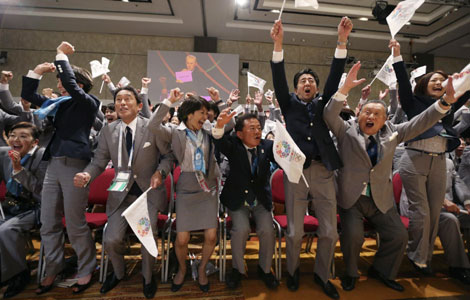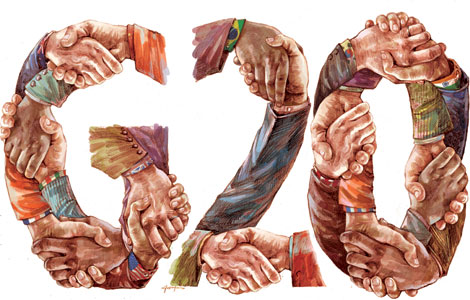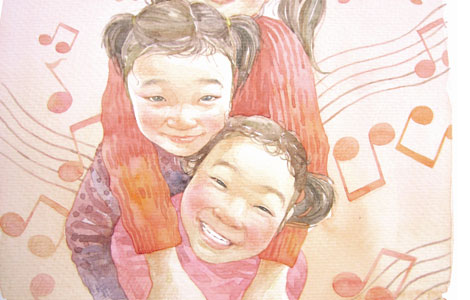Sign language used as a matter of course
Updated: 2013-09-09 19:50
By Huang Zhiling (chinadaily.com.cn)
|
||||||||
When talking with strangers, Ji Siniu often uses gestures. She speaks slowly and pauses from time to time.
"It is an occupational disease," said the 45-year-old teacher from Nujiang Special Education School in the Nujiang Lisu autonomous prefecture in Yunnan province.
"To communicate with my students, I have had to use gestures and speak slowly and in an exaggerated way since 1997. As a result, it has become a habit even when I mingle with other people," she said.
Ji, of the Lisu nationality, had worked as a rural primary school teacher for eight years when she started working at Nujiang Special Education School, the only school in the Nujiang Lisu autonomous prefecture dedicated to students who are deaf, mute or have mental health problems.
"I had no idea what special education was and was so stupid as to think it was a special school for training spies," she said.
She had to teach herself sign language for two years before she passed an examination to receive a professional qualification showing her proficiency.
Since then, she has taught more than 50 students who work in different fields. Some work outside Yunnan and others have started their own businesses in their hometowns.
In 2005, He Jiyuan, one of her students, passed the entrance examination to Beijing Union University. Upon graduation from the university, he returned to the prefecture where he now teaches fine arts and maths.
"It is very nice to see people who are deaf, mute or have mental health problems from the mountains integrate into society," Ji said.
Nujiang abounds in high mountains and deep valleys and many of its residents live on the mountainside.
A household saying in China says that nine of 10 deaf people are also mute. But Ji thinks instead that nine of 10 deaf people can speak. "Thanks to modern hearing aids, the deaf can live in the world of sound," she said.
"To be a qualified teacher of special education, one has to have a loving heart and be persistent," she said.
The first class for new students in her school is to teach them how to say "mother". Although that is easy for most children, Ji has to teach her students hundreds of times a day with exaggerating movements.
"When a student finally utters a sound, it is like that of a pig. But it appears the most pleasant sound to me, especially when he or she calls me 'mother,'" Ji said.
When He Changjian, 13, a girl with mental health problems, recently had her period for the first time, she was so scared she told Ji with tears and sign language.
With a broad smile, Ji said: "Congratulations. You have grown up." Then she taught her the ABCs of adolescent health. Ji has paid special attention to the girl since and the student does what she can for Ji.
"She likes carrying my bag for me and fetching my keys. To her, I am both her teacher and mother," Ji said.
According to State regulations for special education, the proportion of teachers to students in a school for special education should be 1 to 4. But there are only 11 teachers at Ji's school, which has more than 80 students.
"It is urgent to have more teachers," she said.
Li Yingqing contributed to the story.

 Chinese fleet visits Pearl Harbor in Hawaii
Chinese fleet visits Pearl Harbor in Hawaii
 US: Proven link of Assad to gas attack lacking
US: Proven link of Assad to gas attack lacking
 Serena Williams repeats as US Open champion
Serena Williams repeats as US Open champion
 Panda 'Bai Yun' celebrates 22nd birthday in US
Panda 'Bai Yun' celebrates 22nd birthday in US
 Exports expand in Aug amid signs of recovery
Exports expand in Aug amid signs of recovery
 Rodman back from DPRK without jailed American
Rodman back from DPRK without jailed American
 National Games: Pictures of the day
National Games: Pictures of the day
 Abe speech helps secure 2020 Games for Tokyo
Abe speech helps secure 2020 Games for Tokyo
Most Viewed
Editor's Picks

|

|

|

|

|

|
Today's Top News
Shanghai FTZ 15% corporate tax rate rumor denied
DPRK leader has a baby daughter: Rodman
US: Proven link of Assad to gas attack lacking
Li: China pursues sustainable growth
Trending news across China
China-US military ties deepen
Inflation slows to 2.6% in August
Chinese president arrives in Uzbekistan for visit
US Weekly

|

|






